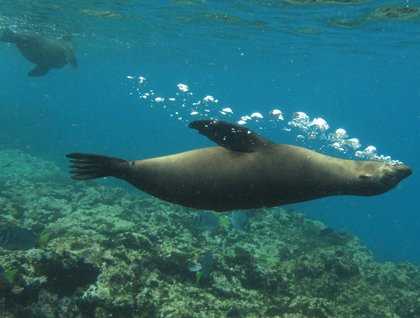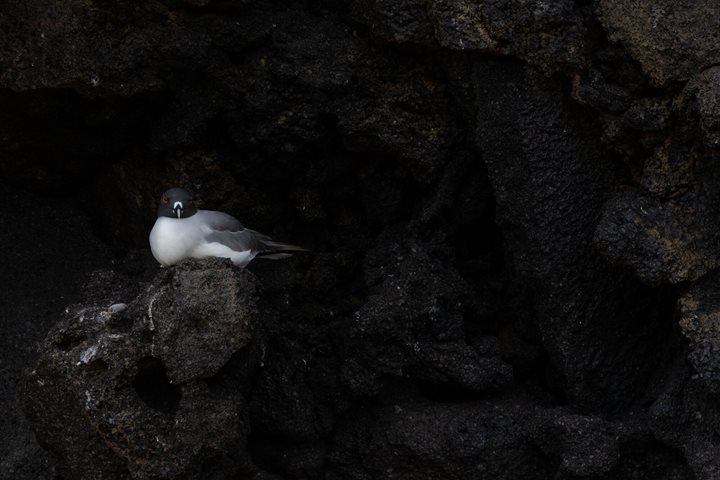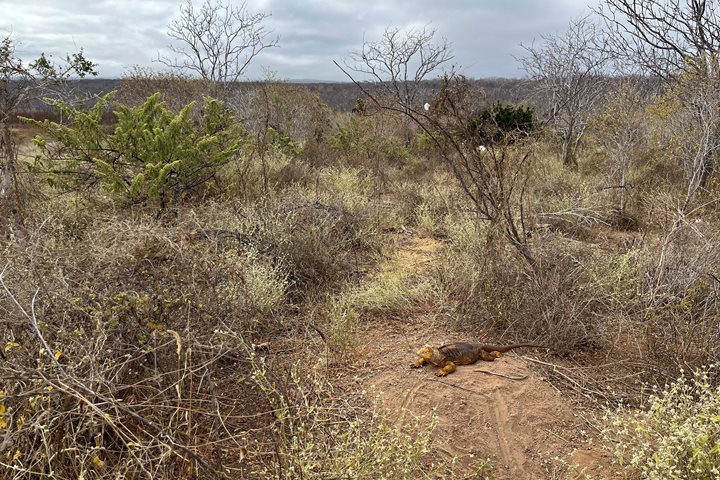Following in Charles Darwin’s footsteps, today we visited Floreana Island.
Before breakfast, we went ashore on Punta Cormorant, with a fascinating beach of olivine sand. Here we walked along a brackish lagoon, where we had the chance to see many flamingos. The trail was surrounded by endemic and native vegetation, and it took us to a second beach of incredibly fine, white, coralline sand, a favorite nesting site for green sea turtles. Nesting activities are almost over at this time of the year, and although we did not see any fresh turtle tracks, we did see evidence of the nesting activity: indentations on the sand dunes, turtle egg shells and even some eggs washed away by the waves.
After our early hike and breakfast, our captain repositioned the National Geographic Endeavour, closer to Champion Islet. This is a volcanic cone, which is now eroded, has many rocky shores, home to sea birds and Galapagos sea lions, but also home to the remnant population of the Floreana mockingbird, which was driven almost to extinction by cats, rats and other introduced predators on the main island.
We explored the islet by Zodiac in the search of these rare and unique birds (which inspired Darwin in the formulation of his theory of evolution through natural selection) and the rest of the morning we devoted to enjoying the underwater realms, either from our glass bottom or by snorkeling. Plenty of playful sea lions gave our guests the time of their life!
Following lunch, we spent the afternoon visiting the famous Post Office Bay. This famous landmark was first mentioned in 1793 by British Captain James Colnett, and it is still used to mail letters with no stamps required. We had the chance to go through the barrel to look for any post cards addressed to our home town, so that we could hand deliver them, as the first visitors to the Galapagos used to do. After learning about the human history of the island, we continued with our exploration of the bay by Zodiac and kayak.
To control invasive species and to restore the ecosystem of Floreana, two ambitious restoration programs are underway: the Galapagos Verde 2050, which aims to restore the ecosystem and habitats of Floreana and the Floreana Mockingbird program, which aims to re-introduce these birds to the main island that they once inhabited. These massive efforts are only possible with a compromise from all parties that play an important role in the Galapagos future. This is the only way to protect this beautiful archipelago..







